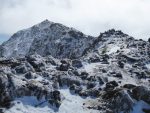 More often than not we simply drive through Devon on our way down to Cornwall so, for our first holiday of the summer, we thought we’d head there for a week of camping. We were staying at Leadstone Camping, midway between Dawlish and Dawlish Warren. It’s a pleasant enough site, certainly in comparison to the massive caravan parks that surround it and, for most of the week, we had excellent weather for camping. It was a shame we hadn’t packed the bikes as there was a good cycle route along the estuary to Exeter.
More often than not we simply drive through Devon on our way down to Cornwall so, for our first holiday of the summer, we thought we’d head there for a week of camping. We were staying at Leadstone Camping, midway between Dawlish and Dawlish Warren. It’s a pleasant enough site, certainly in comparison to the massive caravan parks that surround it and, for most of the week, we had excellent weather for camping. It was a shame we hadn’t packed the bikes as there was a good cycle route along the estuary to Exeter.
On our first full day, we were picked up by my Uncle (whose proximity was our main reason for choosing the location) and we drove to Brixham to take him up on a long-standing offer of a day out on his boat. Everyone enjoyed themselves as we sailed across the bay and back, although both Emma and Duncan were sick over the side. They decided that next time they’d skip lunch on the boat! They certainly made up for the lost calories with a very nice meal out at The Anchor Inn in the evening.
 The next day we met up with friends from back at home at Compton Castle where, as my Uncle had warned us, there really wasn’t a huge amount to do. Keeping with the National Trust theme, we moved on to Parke for a nice walk. As is obligatory when in Devon, we enjoyed a very nice cream tea at Home Farm Cafe.
The next day we met up with friends from back at home at Compton Castle where, as my Uncle had warned us, there really wasn’t a huge amount to do. Keeping with the National Trust theme, we moved on to Parke for a nice walk. As is obligatory when in Devon, we enjoyed a very nice cream tea at Home Farm Cafe.
For our third day, we stayed local, walking down into Dawlish to see the black swans for which is famed and for a game of crazy golf. Dawlish is everything you’d expect from a British seaside town which I’m not sure is a good thing! After sheltering from the midday sun, we then walked in the other direction to Dawlish Warren. Once you get past the shops, bars, and arcades, it’s a pleasant enough spot with a good stretch of sandy beach backing on to the spit that is the nature reserve. We all had a dip in the sea and failed, yet again, to stop the tide overrunning our sandcastle!
 We’d been joined by Christine’s parents at this point and, on our last full day, we all walked along the coast path to Teignmouth. We only had to shelter once from a passing shower. The children would recommend the waffles in Finley Brown’s cafe (although to be fair, I got to eat a fair amount of their massive portions). That whole section of seafront being dominated by the railway line, it seemed only fitting that we take the train back to Dawlish. Christine wouldn’t tell me how much it cost but I suspect we were paying more per person than the number of minutes we spent on the train!
We’d been joined by Christine’s parents at this point and, on our last full day, we all walked along the coast path to Teignmouth. We only had to shelter once from a passing shower. The children would recommend the waffles in Finley Brown’s cafe (although to be fair, I got to eat a fair amount of their massive portions). That whole section of seafront being dominated by the railway line, it seemed only fitting that we take the train back to Dawlish. Christine wouldn’t tell me how much it cost but I suspect we were paying more per person than the number of minutes we spent on the train!
All-in-all, it was a great start to the holidays although next time I think we’d stay closer to Dartmoor or further west where there are more options for things to do.




















 RSS - Posts
RSS - Posts